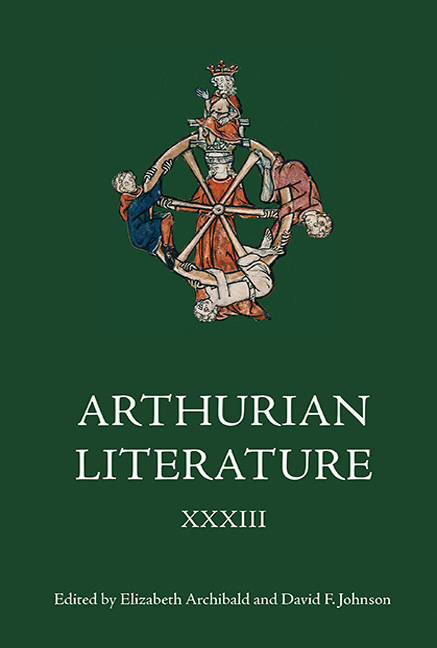37 results
A tale of two intensive care units (ICUs): Baseline Staphylococcus aureus colonization and mupirocin susceptibility in neonatal and pediatric patients requiring intensive care
-
- Journal:
- Infection Control & Hospital Epidemiology / Volume 44 / Issue 3 / March 2023
- Published online by Cambridge University Press:
- 22 April 2022, pp. 447-452
- Print publication:
- March 2023
-
- Article
-
- You have access
- Open access
- HTML
- Export citation
Impact of an electronic best-practice advisory in combination with prescriber education on antibiotic prescribing for ambulatory adults with acute, uncomplicated bronchitis within a large integrated health system
-
- Journal:
- Infection Control & Hospital Epidemiology / Volume 40 / Issue 12 / December 2019
- Published online by Cambridge University Press:
- 21 October 2019, pp. 1348-1355
- Print publication:
- December 2019
-
- Article
- Export citation
Chemical, Biological, Radiological, Nuclear, and Explosive (CBRNE) Science and the CBRNE Science Medical Operations Science Support Expert (CMOSSE)
-
- Journal:
- Disaster Medicine and Public Health Preparedness / Volume 13 / Issue 5-6 / December 2019
- Published online by Cambridge University Press:
- 17 June 2019, pp. 995-1010
-
- Article
- Export citation
Stratigraphy, fossils, and age of sediments at the upper pit of the Lost Chicken gold mine: new information on the late Pliocene environment of east central Alaska
-
- Journal:
- Quaternary Research / Volume 60 / Issue 1 / July 2003
- Published online by Cambridge University Press:
- 20 January 2017, pp. 9-18
-
- Article
- Export citation
Contents
-
- Book:
- Arthurian Literature XXXIII
- Published by:
- Boydell & Brewer
- Published online:
- 29 July 2017
- Print publication:
- 16 December 2016, pp v-vi
-
- Chapter
- Export citation
Contents of Previous Volumes
-
- Book:
- Arthurian Literature XXXIII
- Published by:
- Boydell & Brewer
- Published online:
- 29 July 2017
- Print publication:
- 16 December 2016, pp 219-222
-
- Chapter
- Export citation
Commentary
-
- Book:
- Arthurian Literature XXXIII
- Published by:
- Boydell & Brewer
- Published online:
- 29 July 2017
- Print publication:
- 16 December 2016, pp 214-218
-
- Chapter
- Export citation
Contributors
-
- Book:
- Arthurian Literature XXXIII
- Published by:
- Boydell & Brewer
- Published online:
- 29 July 2017
- Print publication:
- 16 December 2016, pp ix-x
-
- Chapter
- Export citation

Arthurian Literature XXXIII
-
- Published by:
- Boydell & Brewer
- Published online:
- 29 July 2017
- Print publication:
- 16 December 2016
General Editors’ Foreword
-
- Book:
- Arthurian Literature XXXIII
- Published by:
- Boydell & Brewer
- Published online:
- 29 July 2017
- Print publication:
- 16 December 2016, pp vii-viii
-
- Chapter
- Export citation
Frontmatter
-
- Book:
- Arthurian Literature XXXIII
- Published by:
- Boydell & Brewer
- Published online:
- 29 July 2017
- Print publication:
- 16 December 2016, pp i-iv
-
- Chapter
- Export citation
Miscellaneous Endmatter
-
- Book:
- Arthurian Literature XXXIII
- Published by:
- Boydell & Brewer
- Published online:
- 29 July 2017
- Print publication:
- 16 December 2016, pp 184-213
-
- Chapter
- Export citation
Contingent Valuation Focus Groups: Insights from Ethnographic Interview Techniques
-
- Journal:
- Agricultural and Resource Economics Review / Volume 24 / Issue 1 / April 1995
- Published online by Cambridge University Press:
- 15 September 2016, pp. 56-69
-
- Article
- Export citation
Impact of Contact Isolation Precautions on Multi-Drug Resistant Acinetobacter baumannii in the Pediatric Intensive Care Unit
-
- Journal:
- Infection Control & Hospital Epidemiology / Volume 36 / Issue 9 / September 2015
- Published online by Cambridge University Press:
- 05 June 2015, pp. 1108-1110
- Print publication:
- September 2015
-
- Article
- Export citation
Contributors
-
-
- Book:
- The Cambridge Dictionary of Philosophy
- Published online:
- 05 August 2015
- Print publication:
- 27 April 2015, pp ix-xxx
-
- Chapter
- Export citation
Contributors
-
-
- Book:
- Essentials of Global Mental Health
- Published online:
- 05 March 2014
- Print publication:
- 27 February 2014, pp x-xiv
-
- Chapter
- Export citation
Contributors
-
-
- Book:
- Geriatric Emergency Medicine
- Published online:
- 05 January 2014
- Print publication:
- 16 January 2014, pp vii-x
-
- Chapter
- Export citation
Use of vitamin D supplements during infancy in an international feeding trial
-
- Journal:
- Public Health Nutrition / Volume 17 / Issue 4 / April 2014
- Published online by Cambridge University Press:
- 24 June 2013, pp. 810-822
-
- Article
-
- You have access
- HTML
- Export citation
Contributors
-
-
- Book:
- Cognitive Behaviour Therapy for Children and Families
- Published online:
- 05 March 2013
- Print publication:
- 14 March 2013, pp viii-x
-
- Chapter
- Export citation
Contributors
-
-
- Book:
- Fertility Preservation in Male Cancer Patients
- Published online:
- 05 March 2013
- Print publication:
- 21 February 2013, pp vii-x
-
- Chapter
- Export citation



